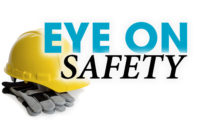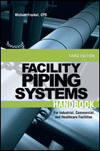Eye on Safety: Winter weather personal protective equipment

‘Tis the season for blizzards! How wonderful they are for children building snowmen!
However, employees working in harsh winter weather are at increased risk for slips, frostbite, car trouble and other cold-weather maladies.
OSHA does not have a cold-weather standard and it expressly states employers do not need to pay for items “used solely for protection from weather,” but employers do have a general duty to eliminate known hazards likely to cause death or serious physical harm to employees.
Rather than grapple with whether frostbite likely will cause death, employers should err on the side of caution by decking their halls with winter personal protective equipment (PPE), training employees on its use and closely monitoring weather conditions and PPE usage.
Here are some tools and tips to assist your employees and customers through the winter. For detailed information, I encourage you to contact product manufacturers or their insurance representatives.
A shirt made of polypropylene: Wool, silk, or synthetic fabrics, such as polypropylene, hold more body heat than cotton, especially when wet.
Hard-hat liners: Hoods or stocking caps may cause hard hats to slip, fit poorly or impede vision. Employees may forego the hard hat, leaving them vulnerable to an impact, or they may go without extra coverage leaving them exposed to frostbite or windburn. Give them the best of both worlds with a hard-hat liner.
Waterproof boots: Ever heard of trench foot? It’s as unpleasant as it sounds and results from prolonged wet and cold feet. Invest in waterproof, insulated footwear or rubber overshoes.
Warm drinks: It may seem silly, but sweetened liquid quickly will raise a person’s body temperature. Bonus: Who can stay crabby while sipping hot cocoa?
Chemical hot packs: Single use, disposable hot packs provide instant warmth for up to 30 minutes when placed inside gloves and boots.
Loosely layered clothing: The air between clothes acts as an insulator and will be more efficient than one heavy layer. The looser the layers, the more effective the insulation.
Insulated gloves with grips: Gloves are a no-brainer, but if your employees lift, carry or maneuver equipment in the cold, consider models with rubber grips.
Radiating heat: Warm up work stations in drafty warehouses or rickety job trailers with portable radiant heaters.
Salt or sanded sidewalks: Salt pros: Melts ice that has already formed, prevents ice from forming and is relatively inexpensive. Salt cons: Does not work if temperature falls below 12° F. It can be harsh on grass, vehicles and other surfaces and creates other environmental concerns.
Sand pros: Creates traction at any temperature. Sand cons: Does not melt ice, so it becomes ineffective if snowed upon. Collects in drainage areas which may cause flooding if not removed in the spring. Alternatives: Kitty litter, saw dust, wood ashes or a snow blower.
Survival kit: If your business puts employees behind the wheel, give them the tools they’ll need to weather the side of the road until help arrives.
Footwear cleats: Slips, trips and falls are the most common workplace injury and are the second-leading cause of workplace deaths (behind motor-vehicle collisions). Employees who walk on ice with regular shoes are begging for a workers’ compensation claim. Equip your team with ice cleats to increase traction and reduce slips and falls.
Door mats: Catch snow, water and dirt at the door with highly absorbent, anti-slip rugs.
Now that you’re prepared, let it snow, let it snow, let it snow!
Looking for a reprint of this article?
From high-res PDFs to custom plaques, order your copy today!







